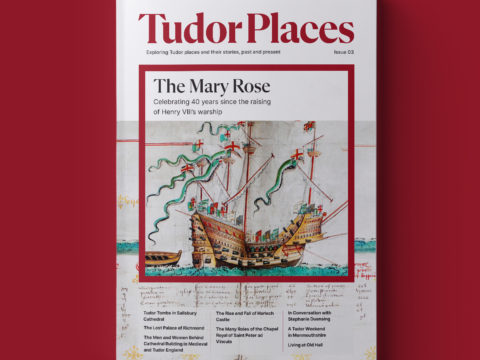James VI & I: Life Story
Chapter 3 : Regents
Whilst James was being carefully educated, the world outside the safety of Stirling was a dangerous place. Scotland was riven between the ‘ Queen’s Party’ which wanted to see Mary restored, and the ‘King’s Party’, which actually held power. In 1570, Moray was assassinated. His place as Regent was taken by James’ grandfather, Matthew Stuart, Earl of Lennox. Lennox, although nominally Catholic, was supported by England – in part because his wife, Lady Margaret Douglas, was in England, and effectively hostage for Lennox’ good behaviour.
Lennox had the distinction of being equally unpopular with the King’s Party for his religion, and the Queen’s Party for his antagonism towards her (he blamed her for his son, Darnley’s, death). Before long, he too had fallen victim to violence, in a bloody raid on Stirling Castle in November 1571 that may have been intended as a kidnap attempt.
Lennox was succeeded by the Earl of Mar, who died within the year. His death may well have been from natural causes, but poisoning was suspected, by none other than the Earl of Morton, who now took over as Regent in November 1572. Morton had been one of Riccio’s murderers, but, paradoxically, this ruthless man eventually brought the civil war to an end by vanquishing the Queen’s Party at last.
James was still only five years old and had lost two Regents to violence and a third to disease. Morton imposed a semblance of peace, but was much resented by many of the nobles, particularly the Catholic Earls of Argyll and Atholl, and James’ new guardian, Sir Alexander Erskine, who had taken that role after Mar’s death. Morton was strongly supported by the English government, morally if not financially.
Morton also had little support from the Kirk, which felt he lent towards an Episcopal model of church government, rather than the Presbyterian model they wished to follow. Matters came to a head in March 1578, when James was not quite twelve. Argyll and Atholl informed the King that they wanted the other nobles to arbitrate a quarrel they had with the Regent. Morton responded that if Argyll and Atholl were not punished, he would be forced to resign as Regent. The earls and Erskine immediately seized on this and advised James to accept the resignation and proclaim himself as at the head of government.
This was duly done, and on 8th March, James took his place in Council for the first time. Whilst Morton was forced to retreat from the public eye and surrender control of Edinburgh Castle, Holyrood, and the Great Seal, necessary for public business, he was permitted to retire to Lochleven, where he apparently enjoyed a brief holiday gardening. Within weeks, though, Morton had regained control of Stirling, in a raid in which Erskine’s son was killed, to the grief of both himself and James.
Morton once again controlled the person of the King. Whilst he had strong support from England, with James now adolescent, a new model of government had to be found, and Parliament was called to make suitable arrangements.
Morton was reinstated as President of the Council, although not as Regent, and the membership was broadened to include Atholl, who soon died, following a banquet with Morton. Rumours of poison became persistent, and eventually a post mortem was held, which concluded that Atholl had died of natural causes. During this last flurry of power, Morton’s old enemies in the Queen’s Party, the Hamiltons, were finally crushed.
This unsettling year had a profound effect on James – the loss of Erskine’s son, the midnight attack at Stirling and the violence gave him nightmares. The English envoy, Sir Robert Bowes recorded that ‘his Grace by night hath been so discouraged as in his sleep he is therefore greatly disquieted.’
James VI & I
Family Tree



